However, the vast area and the extreme weather conditions make it difficult to monitor the snow during Arctic winter. In situ measurements of snow depth on sea ice are rare and mostly obtained in spring because they require daylight conditions. Drifting buoys may cover a whole winter season but their measurements are only representative for a small area around the buoy. Satellites provide the only tool to observe the whole Arctic on a daily basis.
Here we present a new snow depth retrieval based on passive microwave satellite observations (Rostosky et al., 2018). Passive microwave satellites are independent of sunlight and clouds and provide daily, Arctic-wide observations, with, however, coarse spatial resolution (e.g. 25 km²). The retrieval of snow depth from microwave radiometer observations is based on the different scattering properties of snow grains at different microwave frequencies. Methods to derive snow depth from microwave radiometers are already known since the 1990s. The new retrieval developed here, however, uses a different set of microwave frequencies (6.9 GHz and 18.7 GHz) and is extended to Arctic multiyear ice (ice that has survived at least on summer melt) while previous retrievals only work over first-year ice (ice that has formed since the beginning of the freezing season). The method uses an empirical linear relation between the gradient ratio GR(v1,v2) of satellite observed brightness temperatures at two different frequencies (v1 and v2) and snow depth (GR(v1,v2)= (tbv1 – tbv2)/(tbv1 + tbv2)). The retrieval has the form Sd = a+b*GR(v1,v2), where Sd is the snow depth and a and b are empirical regression coefficients.
In order to derive the regression coefficients, satellite observations are compared to airborne snow depth measurements (obtained in each spring from 2009 to 2016) from the NASA Operation IceBridge campaign (OIB). Figure 1 shows the scatter plot of the satellite observations (GR(19/7)) and OIB snow depth over Arctic first-year ice. We find good correspondence between the satellite and airborne datasets. The correlation (cor) between both datasets is –0.73 and the root mean square error (RMSD) is 3.71 cm. Over Arctic multiyear ice, we find a reasonable relation (not shown here) but with higher errors (RMSD = 6.63 cm).
Figure 2 shows the monthly averaged snow depth in March 2015 derived with the new retrieval. The black contour marks the border between multiyear ice and first-year ice. The deepest snow is retrieved north of the Canadian Archipelago and is between 35 cm and 45 cm. In the central Arctic the snow depth is around 20 cm. The lowest values are found in the Kara and Laptev Seas where the snow depth is between 10 cm and 15 cm.
The current retrieval is only evaluated for spring snow since the OIB snow depth measurements are limited to March and April. In spring we find a very good performance of the retrieval over first-year ice and a reasonable performance over multiyear ice. For first-year ice regions we can look into the temporal development of the snow depth. Figure 3 shows the snow depth time series from 2005 to 2016 for the Beaufort Sea. We find significant variability in snow depth for all winter months. “For example, winter 2014/2015 starts with a high snow depth of more than 25 cm already in October which increases to 32 cm in January. Thereafter it strongly decreases again while in most other years the snow depth increases more monotonously from October to April.”, underline the authors.
References
Rostosky, P., G. Spreen, S.L. Farrell, T. Frost, G. Heygster, and C. Melsheimer, 2018: Snow Depth Retrieval on Arctic Sea Ice From Passive Microwave Radiometers – Improvements and Extensions to Multiyear Ice Using Lower Frequencies, Journal of Geophysical Research: Oceans, 123, doi.org/10.1029/2018JC014028
Contact
Authors: P. Rostosky, G. Heygster, C. Melsheimer, G. Spreen (IUP) Bremen
Graphics
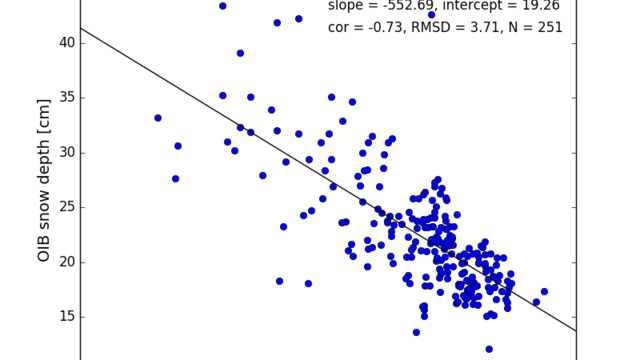
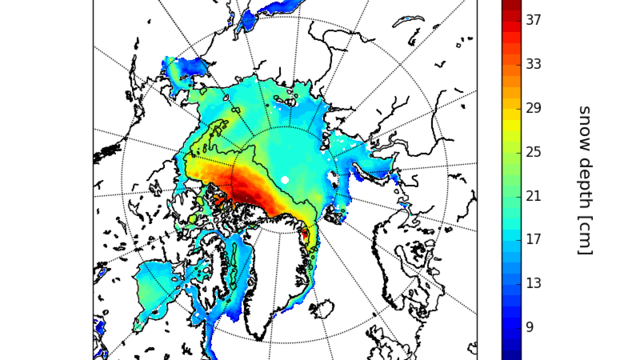
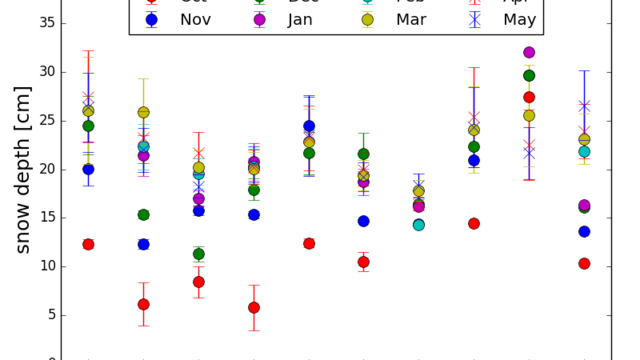
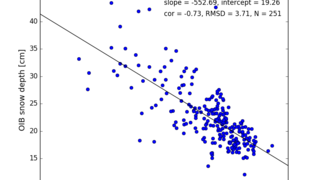
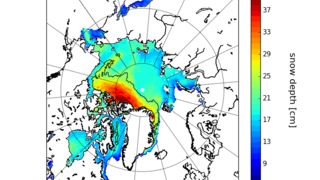
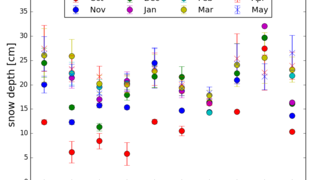

![[Translate to English:] [Translate to English:]](/fileadmin/_processed_/9/0/csm_Abb_Fig_2_Monatsmittel_Schneedicke_032015__monthly-mean_snow_thickness_032015_0781cee371.png)